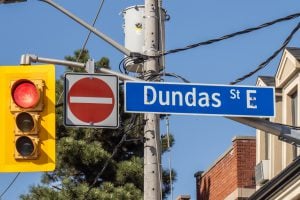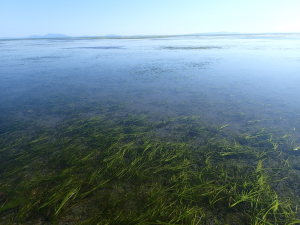
Wildlife
The otter, the urchin and the Haida
As the sea otter begins its long-overdue return to Haida Gwaii, careful plans are being laid to welcome them — and to preserve a prosperous shellfish harvest
- 3015 words
- 13 minutes
Travel
Four reasons why a horseback expedition in southwestern British Columbia is a must-do this summer

From the shores of the Pacific Ocean to the peaks of the Coast Mountains, the landscapes of southwestern British Columbia have long captured the imagination of adventurers from around the world. And there’s no better way to explore the natural wonders in this stunning region than during a one-of-a-kind horseback riding expedition.
You’ll regain perspective. You’ll reconnect with friends and family. You’ll realize what you’ve been missing. Read on to discover four more reasons to saddle up with Copper Cayuse Outfitters and see the best of British Columbia.
With so much to explore off the beaten track, multi-day horseback trips are becoming very popular with travellers who want to blaze their own trail. A professionally guided horseback trip with Copper Cayuse Outfitters, which is an official Canadian Signature Experience partner of Destination Canada, is one of the best ways to experience the vast and abundant beauty of the province. Based in Pemberton in the heart of the aptly named Sea to Sky Corridor, Copper Cayuse Outfitters offers two overnight journeys: the Tenquille Lake Expedition and the Li-lik-hel Gold Mine Expedition. Over two nights and three days, you can explore hidden alpine lakes, wander through wildflower-filled meadows, see historic gold mines and take in panoramic views of the iconic West Coast rainforest.
A fresh batch of pancakes, handpicked blueberries and a pot of steaming cowboy coffee — is there a better way to start a day of adventure in the B.C. wilderness?
Guests on both the Tenquille Lake Expedition and the Li-lik-hel Gold Mine Expedition will stay at Copper Cayuse Outfitters’ backcountry camp near remote Birkenhead Lake Provincial Park. This natural haven was built with the utmost care for the environment, using deadfall, reclaimed wood and other natural materials, ensuring no trace will be left when everything is packed out and the buildings are eventually removed. It also has a warm-water shower fed by the local river, a washroom, private tent accommodation for single travellers, couples and families, a charming dining area and a big family-style fire pit — a natural gathering place for enjoying the sunset and sharing stories after the day’s ride.
Sleep carefree under the stars knowing that while nature is leaving its imprint on you, you won’t be leaving yours on it.


Did you know that the province has its own Wild West story? The gold rush of British Columbia began in 1858 when prospectors and miners flooded into Canada from the United States and Europe. Dreaming of finding their fortune, thousands of men and women made their way through the wilderness by river or horse trail to the Cariboo gold fields.
More than 160 years later, you can still explore the old mines and find historic artifacts and tools waiting to be uncovered in the mountains — if you know where to look and how to get there. But this is just one of the stories to be told here.
The original inhabitants of these generous lands are the St’át’imc people, and Copper Cayuse Outfitters’ ranch, camp and trails are within their unceded territory. Copper Cayuse Outfitters is proud to honour the language, culture and history of the St’át’imc people’s traditional territory.
Climbing high from the valley bottom of Birkenhead Provincial Park and lead by a professional wrangler, you will retrace the journey of the old miners, the St’át’imc people and their horses — the original creators of these sturdy winding trails etched into the mountainside.

No experience riding horses? Don’t worry! All ages and abilities are encouraged to join either the Li-lik-hel Gold Mine Expedition or the Tenquille Lake Expedition. Copper Cayuse Outfitters’ wranglers take great care to match your riding ability and level of experience to the spirit and character of a horse. They’ll also work with you to develop your confidence and skills for riding single-track mountain trails along the way. After an incredible three days, an unspoken bond will have developed between you and your horse — after all the two of you will have ridden 60 kilometres and climbed more than 1,800 metres together.


If you’re ready to saddle up for a truly Canadian horseback tour, visit coppercayuseoutfitters.ca.
This article is sponsored by Copper Cayuse Outfitters.
Are you passionate about Canadian geography?
You can support Canadian Geographic in 3 ways:

Wildlife
As the sea otter begins its long-overdue return to Haida Gwaii, careful plans are being laid to welcome them — and to preserve a prosperous shellfish harvest

People & Culture
The history behind the Dundas name change and how Canadians are reckoning with place name changes across the country — from streets to provinces

Environment
Collaborative research is uncovering the secrets of coastal seagrass beds to help keep them healthy

Environment
Two marine biologists offer a glimpse of life at the bottom of the ocean during 2018, 2019 and 2020 seamount expeditions